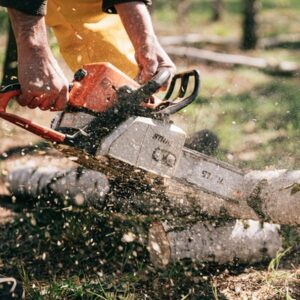Now is the Time to Cut Firewood

Why cut firewood in the spring?
Spring is a great time to cut firewood for several reasons. First, the weather is beautiful and spring is a great time to be outside. You will be glad you do this in the spring when the heat of the summer rolls around! Second, firewood needs time to season and dry and be ready to burn in the winter. Cutting it in the spring gives you extra time for it to properly season. Wood with a lower moisture content will always provide a greater heating value (British thermal units or btu).
Firewood tips
1.
Never burn preservative treated wood.
2.
Higher density species (oak, hickory, pecan, etc.) will provide greater heating value.
3.
Stack firewood off the ground and cover the top of the stack.
4.
Orientate your stack so that the prevailing winds blow through the stack.
5.
Always burn the oldest wood first. First in, first out.
Why should I use high density wood?
You can have wood blocks of different species with the same dimensions but their weight will be different. Density is mass per unit volume. In the US, we often report density as pounds per cubic foot. The difference in weight is largely due to the inherent differences in wood structure of the different species. These differences are very useful for identifying the genus and species of a piece of mystery wood. If you were to look under a microscope at a high density species such as oak and a lower density species such as poplar, one immediate difference you would notice is that the oak has very little void space compared to the poplar. Oak has low porosity and permeability. Oak will have large pores in the earlywood (springwood) of a growth ring but the rest of the ring is packed very tight. White oak commonly has a condition known as tyloses. This occurs when an adjacent cell grows through a pit in the cell wall of the large earlywood vessel and essentially clogs the vessel. So, white oak has very low permeability and is difficult to impregnate with preservative treatments. However, white oak is an excellent choice for cooperage – liquid containers. I have had the pleasure of visiting a wooden barrel factory in Kentucky. The assembly process remains unchanged throughout the years as does the wood species – white oak.
Meet the Author
Dr. Todd Shupe is the President of Wood Science Consulting, LLC. He is a well-recognized expert on wood forensics, wood preservation, wood decay and degradation, and wood species identification. He has a broad background in new product development, quality management, and marketing and sales in both the public and private sectors. For more information please visit DrToddShupe.com.
We welcome your comments below.
Thank you for visiting. We trust that you have enjoyed reading our articles.
Liked this post? Read more below or search for more topics . . .

